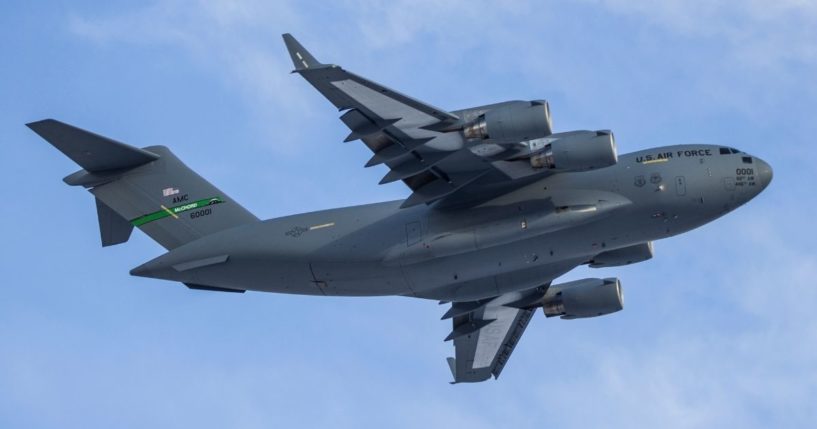
Groundbreaking Air Force Innovation Turns Lumbering C-17s Into Devastating Aerial Missile Silos
Warehouse workers are trained in safety. After all, speeding forklifts, moving trucks and heavy pallets can be dangerous — even deadly.
The U.S. Air Force is focusing on the deadliness. Of pallets, that is.
The Air Force is testing a plan to parachute pallets loaded with cruise missiles out of cargo planes, according to The Washington Times.
It’s an ingenious — and cost-cutting — way to potentially defend Taiwan from invading Chinese vessels.
“We’re talking about the need to deliver on the order of 1,000 or more anti-ship missiles into a highly contested battle space,” David Ochmanek, a research analyst, said.
“That’s a pretty demanding criteria,” he noted. “The targets of greatest interest in the opening phase of that war are moving — they’re ships.”
As part of a project dubbed “Rapid Dragon,” the Air Force plans to launch a live cruise missile dropped from a cargo plane by the end of the year.
The Air Force and Lockheed Martin have already dropped from C-17 and EC-130 planes pallets with armaments aerodynamically identical to cruise missiles, the Times reported.
Two test flights were “a big step toward showing the feasibility” of using pallets as cruise missile launchers, according to Scott Callaway, director of advanced flight programs for Lockheed Martin.
In those flights, crews pushed pallets out the back of the planes, with the pallets then stabilized by parachutes. A second phase entailed receiving new ground-based targeting information during the flights.
Rapid Dragon is a supplement to conventional strategic bombers, according to Bradley Bowman of the Foundation for Defense of Democracies.
“The potential addition of capacity in terms of launch platforms is very important,” said Bowman, senior director of the foundation’s Center on Military and Political Power. “This really opens up a whole genre that is interesting and helpful for us.”
Bowman would like to see the Rapid Dragon project eventually shared with Japan, India and Australia — other nations within the sphere of Chinese influence and threat.
But there is a potential problem: A serious military conflict might require cargo planes to do their primary duty of transporting materials and personnel instead of acting as makeshift missile launchers.
“For a major contingency or war, we certainly don’t have enough cargo capacity,” Bowman said. “That might limit the number of cargo aircraft available to conduct a cruise missile launch mission.”
But repurposing cargo planes instead of buying new aircraft is cheaper by “orders of magnitude,” according to Ochmanek. “It’s very modular. There are no modifications to the jet. It’s not like it has to go back to the manufacturer.”
Cargo planes carrying pallets to launch missiles.
Congress and taxpayers should find the strategy effective and the cost-savings — um, palatable.
Truth and Accuracy
We are committed to truth and accuracy in all of our journalism. Read our editorial standards.
Advertise with The Western Journal and reach millions of highly engaged readers, while supporting our work. Advertise Today.












